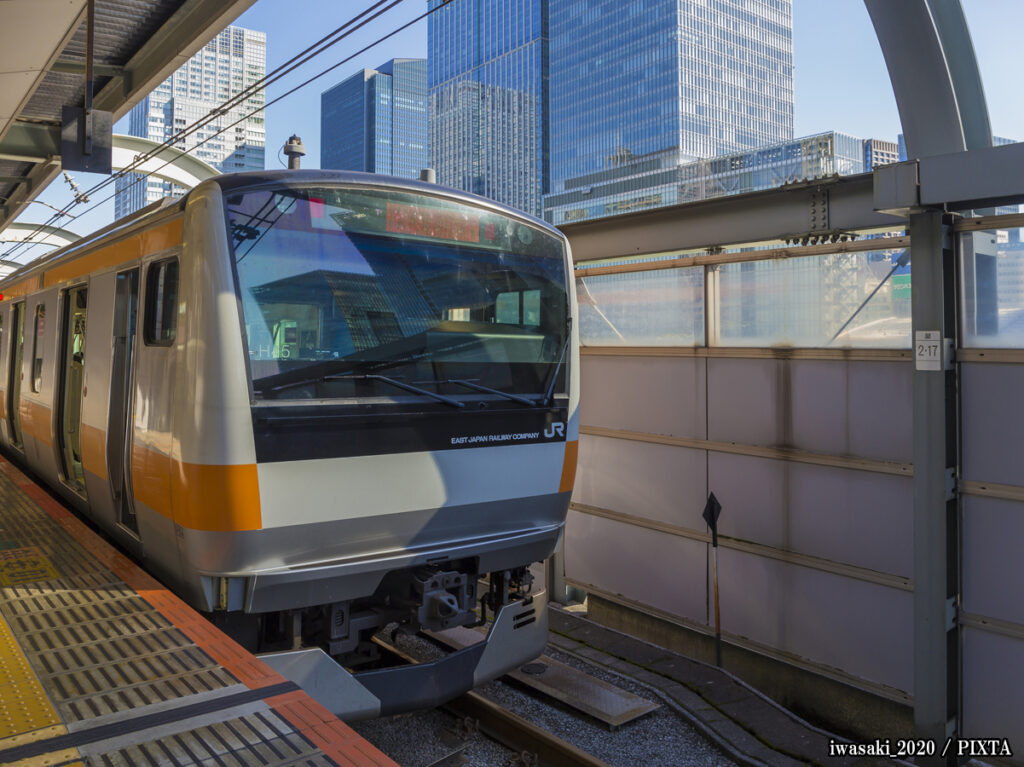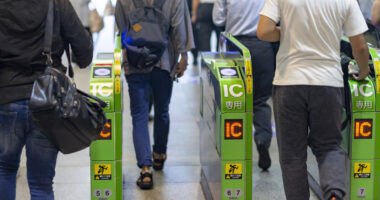Navigating Japan’s public transportation system can feel like a daunting task, especially for first-time visitors. However, Japan’s extensive and efficient rail and bus networks are made much easier to use with a Suica card, one of the most popular prepaid IC cards for travel. If you already have a Suica and are ready to learn how to use it effectively for trains, buses, and other forms of transport, this guide is for you.
In this comprehensive guide, we’ll show you exactly how to use your Suica to travel around Japan like a local, with helpful tips and practical information to make your journeys seamless and stress-free.
What is Suica?
Suica is a rechargeable electronic smart card developed by JR East (East Japan Railway Company), originally launched for the Tokyo metropolitan area. Over time, it has evolved into one of the most convenient ways to pay for public transportation and small purchases across many parts of Japan. With just a tap, travelers can use Suica to ride trains, subways, and buses in major cities like Tokyo, Osaka, and Kyoto.
Suica isn’t just for commuting—it also works for everyday purchases at thousands of stores, including convenience stores, vending machines, coin lockers, restaurants, and even some taxis. It’s a contactless IC card, meaning you don’t need to swipe or insert it. Simply tap it on a card reader and go—no need to fumble for change or buy separate tickets each time you ride.
While Suica is mainly issued by JR East, it has become widely compatible with other regional IC cards through a nationwide network, allowing travelers to enjoy seamless transport in areas far beyond its original Tokyo base. Whether you’re using it to hop on a train, pay for a coffee, or breeze through station gates, Suica has become a must-have travel essential for navigating Japan efficiently.
How to use Suica at train and subway gates
One of the most common and convenient uses of the Suica card is accessing train and subway stations across Japan. Whether you’re traveling on the Japan Rail (JR) network, a city subway line, or a private railway, using your Suica to enter and exit stations is a fast and seamless process. Suica is compatible with nearly all IC card-ready gates, so you don’t need to worry about purchasing a paper ticket each time you ride.
Here’s how to use Suica at train and subway gates:
Step-by-step: Using Suica at train and subway gates
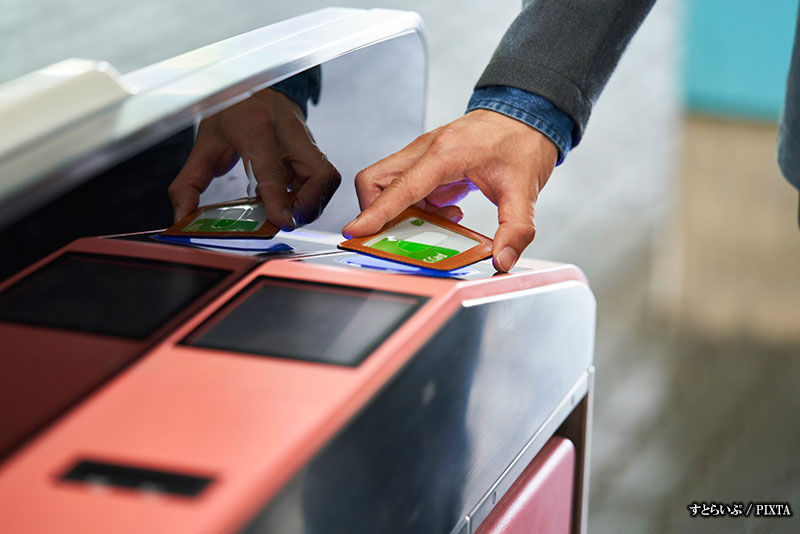
Photo for illustrative purposes
- Approach the ticket gate
When you arrive at the station, look for the automatic ticket gates marked with the IC card logo (usually a blue or green sign). These gates are designed to scan contactless cards like Suica and allow quick entry without inserting tickets. - Tap your Suica to the card reader
Hold your Suica card close to the flat reader panel on top of the gate. It doesn’t need to touch the reader directly—just a light tap is enough. A beep will confirm that your card has been successfully read and your entry logged. - Wait for the gate to open
Once the card is accepted, the gates will open automatically. If your card has sufficient balance and your tap is successful, you’ll pass through without issue. In case of any problem (like low balance), the gate will stay closed and show an error message. - Entering the train or subway platform
After passing through the gate, proceed to your platform and board your train. The Suica system will track your journey and automatically calculate the correct fare when you exit at your destination. - Exiting at your destination
When you arrive at your destination station, repeat the process: tap your Suica on the card reader at the exit gate. The system will calculate and deduct the fare from your balance based on the distance traveled. If your card doesn’t have enough funds to cover the full fare, the gate will notify you, and you’ll need to pay the remaining amount at a fare adjustment machine nearby.
Tips for using Suica at train gates
- Check your balance before you ride: It’s important to ensure your card has enough balance before entering the gate. You can check your remaining balance at any ticket machine, convenience store, or even on the gate display after scanning.
- Topping up your card: You can add funds to your Suica card at dedicated machines in train stations (usually available in English), at convenience stores like 7-Eleven or FamilyMart, or via certain smartphone apps if you’re using a mobile Suica.
- Automatic fare calculation: One of the biggest advantages of Suica is that you don’t have to figure out the fare in advance. The system automatically calculates the fare based on where you entered and exited. This makes transfers, changing lines, or traveling long distances much easier than using single-use paper tickets.
What if you make a mistake?
If you accidentally enter a gate and decide not to board a train or subway, go to the station attendant’s window and let them know. They can reset the entry record on your Suica so you don’t get overcharged when you use it again.
Using Suica with transfers
Suica also works when transferring between lines or networks that support IC cards. As long as you stay within the paid area (i.e., you don’t exit the gates), the system will treat it as one continuous trip.
Using Suica on buses
In addition to trains, Suica is also widely accepted on buses throughout Japan. Whether you’re traveling within Tokyo or on other local routes, you can easily use your Suica card to pay for bus fares. It is similar to using Suica at Train Gates.
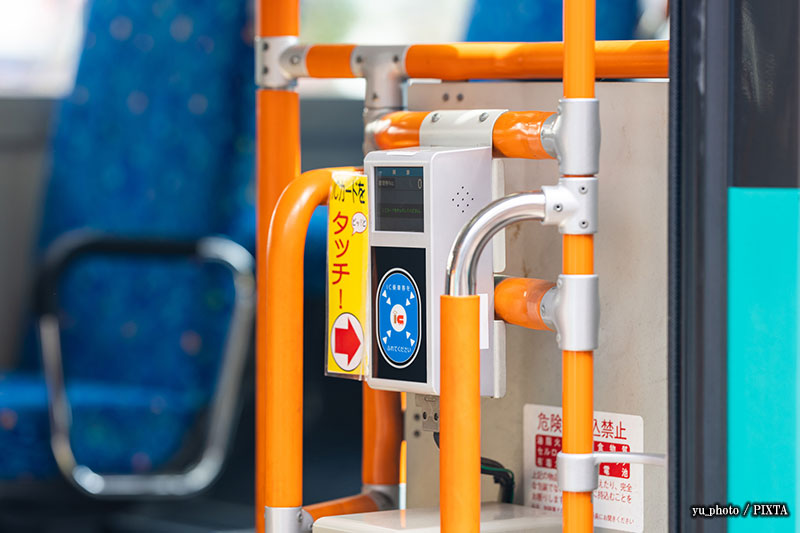
Photo for illustrative purposes
Step-by-step: using Suica on buses
- Board the bus
When you enter the bus, look for the IC card reader, which is usually located next to the driver or near the front entrance. - Tap your Suica
Simply hold your Suica card to the reader. A green light and a beep will indicate that your card has been successfully scanned, and the fare will be automatically deducted from your balance. - Getting off the bus
When you get off the bus, you’ll usually find another card reader near the exit. Tap your Suica card once more to confirm your fare. The card will automatically calculate the correct fare based on your boarding and exit locations.
Tips for using Suica on buses
- Boarding and alighting: Some buses may require you to tap your Suica card when both boarding and alighting. Always check for the second reader when you get off.
- Route variations: Bus fares can vary depending on the distance traveled, so the final fare is calculated at the time of your exit.
- Suica compatibility on local buses: Most major cities, such as Tokyo and Osaka, have buses that accept Suica. If you’re traveling outside major cities, check for Suica-compatible buses, especially in rural areas.
What to do if you travel beyond the paid zone or have an insufficient balance
One of the common challenges travelers face when using Suica is encountering an insufficient balance for their trip, especially if they accidentally travel beyond the distance they paid for or forget to top up their card.
Insufficient balance or overstepping the paid zone
If your Suica balance is too low on a standard Suica card or you’ve traveled beyond the paid zone on a Suica with a special pass (such as the Tokyo Metropolitan District pass or the NONBIRI holiday Suica pass) and have no remaining balance, you won’t be able to pass through the exit gate. Here’s what you can do:
- Topping up your card:
If the gate does not open due to insufficient funds, you can top up your card at any nearby ticket vending machine or convenience store. Suica machines are available at most train stations. - Paying the difference:
If you’ve traveled beyond the paid zone, you can pay the fare difference at a fare adjustment machine located at the exit gate. These machines will display how much additional fare you need to pay to complete your journey. - Use cash:
If you don’t have enough funds to top up your Suica, you can use cash to pay for the difference at the fare adjustment machine.
Tips for avoiding insufficient balance issues
- Check balance via app or machines: Use the Suica mobile app (aka Mobile Suica) or station IC card machines to quickly check your balance before traveling. Some third-party apps also let you check your balance on a physical Suica card.
- Load enough for round trips: Estimate your total travel cost for the day and add extra funds to avoid having to top up mid-journey.
- Top up during off-peak times: Recharge your card during less busy hours to avoid long lines at ticket machines.
- Carry backup cash: Keep some yen on hand in case you need to pay a fare difference or recharge at a machine that doesn’t accept cards.
Compatibility with other IC cards
While Suica is widely accepted, Japan uses a variety of different IC cards for transportation, such as PASMO, ICOCA, and PiTaPa. Understanding the compatibility of Suica with other cards will make it easier to use it when traveling across different regions.
Suica’s compatibility with other cards
- PASMO
PASMO is another major IC card in Tokyo and is compatible with Suica for most transportation systems. You can use either card interchangeably for trains, buses, and subways in the Tokyo area. - ICOCA
ICOCA is a similar card used primarily in the Kansai region (Osaka, Kyoto, Kobe). Suica is compatible with ICOCA in many locations, and you can use them in each other’s regions without issues. - PiTaPa
PiTaPa is a region-specific card used primarily in the Kansai area, but it is not as widely accepted outside the region. However, Suica can be used for payment on most major rail and bus systems, even in PiTaPa zones.
Tips for using Suica with other cards
- Same payment network: When traveling between regions, you don’t need to worry about switching cards if you’re using Suica and the other compatible cards (like PASMO or ICOCA). The IC card systems are all linked through a national network.
- Regional limitations: While Suica is accepted across most regions, always check for specific card compatibility when traveling to more rural or less connected areas.

Photo for illustrative purposes
Practical travel tips by transport type (train, subway, and bus)
Suica isn’t just useful for trains—it works on all forms of public transportation in Japan, including subways and buses. Here are some practical tips for each type of transport:
Train travel
- Skip ticket machines: With Suica, you can walk straight to the ticket gates without stopping at vending machines—perfect for catching tight connections.
- Use station signboards: Check departure boards to find your platform quickly and avoid last-minute platform changes.
- Plan for rural stations: At smaller stations, Suica readers may be at a single gate or unmanned—check signs and exit carefully.
Subway travel
- Follow the color-coded maps: Subway lines are color-coded, making navigation easier even if you don’t speak Japanese.
- Mind the last train: Subways typically stop running earlier than JR trains. Check the last train times to avoid being stranded.
- Station exits matter: Some subway stations have dozens of exits—use Google Maps or station maps to pick the closest one to your destination.
Bus travel
- Watch the fare display: Some buses show a digital fare table inside. Even though Suica calculates the fare for you, it’s good to know the fare zones.
- Have a backup plan: Not all rural or community buses accept Suica. Check the signage near the bus stop or ask the driver if you’re unsure.
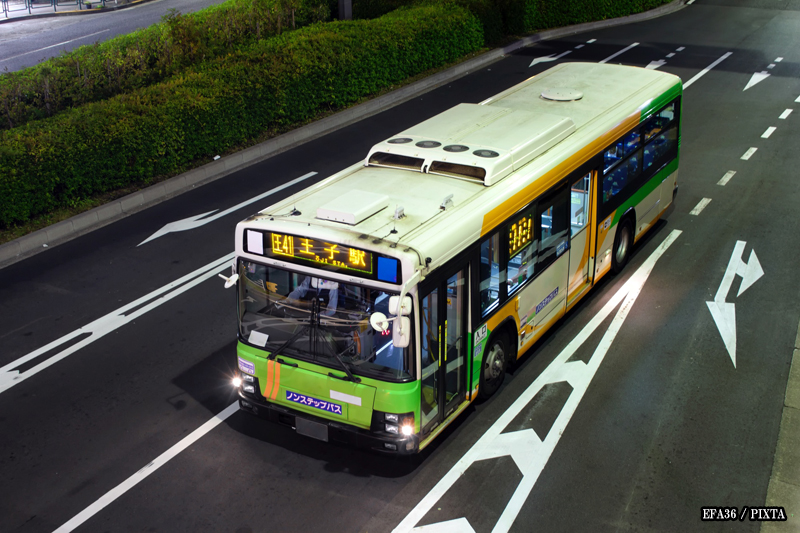
Photo for illustrative purposes
Conclusion
With its ease of use and wide compatibility across Japan’s public transportation system, the Suica card is an indispensable tool for anyone traveling around the country. By following this guide, you’ll be able to use your Suica like a local and enjoy seamless travel across Japan’s transportation networks. Happy travels!
